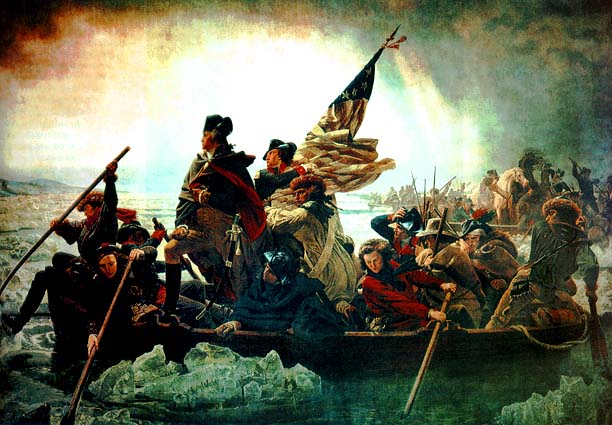In writing about Nathaniel Saxton in my series on Raven Rock, I learned about his investments outside of that village. One of his earliest deeds involved the sale in 1807 of 47.27 acres to Ann Anderson for $422.69.1 This property in today’s Stockton village has an interesting story, one which shows how vulnerable 18th and early 19th century people were to the miserable consequences of debt.
Amwell Township
Amwell Township was created in 1708, in an area north of Burlington County. It did not belong to a county until 1714 when Hunterdon County was created. It contained Raritan, Delaware and East & West Amwell Townships until 1838 when Delaware and Raritan were created. In 1844, what was left of Amwell was divided into East and West. The Flemington, Lambertville and the Borough of Stockton also originated in Amwell Township.
Saxtonville Tavern’s First Innkeeper
And a Farewell to Nathaniel Saxton
Here is Egbert T. Bush’s description of the Saxtonville Tavern:
“This community was well supplied with taverns in the old days and somewhat later. Far up in old Saxtonville stands an interesting tavern house, with its four stone chimneys and low stone walls. It seems to be at least 150 years old, but has no date stone to prove its age. The builder is unknown, as are also the early keepers. It was no doubt built expressly for that purpose, everything about it seeming to spell tavern. This was evidently included among the Nathaniel Saxton properties. Bryan Rogan is known to have kept the old tavern 75 years ago. After him came one—Kiley, and then Austin Bray. Thomas McAlone bought the property later. It is now owned and occupied by his son Wallace W., teacher of the Sergeant’s School. No tavern has been kept here for about 60 years past.”1
The Last Chapter of the Saxtonville Mill
After John R. Hamilton disappeared, leaving James Major, Mindert Wilson and Geo. Holcombe with the mill lot on their hands, the State Bank at New Brunswick sued either James Major or Mindert Wilson (I’m still not sure which) in chancery court for the outstanding mortgage. The court ruled in the Bank’s favor, and issued a writ of fieri facias to seize the mill lot at Saxtonville “whereon Myndert Wilson formerly resided,” along with its appurtenances (dwelling house, grist mill and saw mills), and offer them for public sale. Sheriff John Cavanagh conducted the sale on March 17, 1820. John Bray Esq. bid on behalf of the bank, and the property was conveyed to the State Bank at New Brunswick on April 1, 1820 for $4000.1
Hunterdon’s Oldest School House
by Jonathan M. Hoppock
published in The Democrat Advertiser, January 25, 1906
This article was written by J. M. Hoppock. I have added corrections and additions in footnotes. Mr. Hoppock’s very specific description of this building, which was demolished long ago, is invaluable to students of the township’s history and early architecture.
Anderson Bray Farm and The Pyatt Family
Mr. Bush Traces Ownership of Place Long Owned
by Bray Descendants
The Bray Family Portraits
by Egbert T. Bush, Stockton, N.J.
published by the Hunterdon Co. Democrat, April 19, 1934
The following article was written by Mr. Bush about a farm many people think of as the Chet Huntley farm or the Douglas Knight farm. I have added footnotes to flesh out the story.
Thomas Jones v. David Johnes
Who Collected The Boats?

I must begin by congratulating all those who worked so hard to save the Christopher Vought house in Clinton Township. The building is a living reminder of the passions that so profoundly moved Americans of all persuasions during the Revolutionary War. To lose that building would have been a tragic loss through demolition by neglect.
Home of Capt. David Jones
Reading Howell’s Map of 1785
Some time ago, I made reference to the map of the Delaware River prepared by Reading Howell. Some people pointed out to me that Howell had made such a map in 1792, but were surprised by the date 1785. I had seen a copy of that map but had been unable to find it in my papers—that is, until today, when I found a very nice copy among the news clippings and other items saved by Edna Laszlo of Raven Rock. I am sorry to say, there was no notation explaining where the original map is kept.
Schafer, Shaffer or Shepherd
This is a reply to Kevin Shepherd who wrote this comment on my “Basic Resources” page:
Keith Shepherd <kshepherd@yahoo.com> 1/3/2012: Do you happen to have any information on the German or Dutch Shafer/Shepherd families of Amwell Township, Hunterdon County, NJ starting from about the mid 1750’s? I’ve been to the Hunterdon County Historical Society several times and found a few files on them but there are a lot of missing pieces. I’m trying to track down the first Shafer/Shepherd to arrive in 1754. The tradition is that he died on shipboard on his way over from Germany but his wife Margaret and their 4 children named John, Henry, Peter & possibly Richard (he may have been in his Mother’s womb) carried on to Amwell. She later married Andrew Bearder, who was on the ship with them when he traveled to America.
Raven Rock Was Once Bool’s Island
“Village Might Appropriately Have been Called Riven Rock
Quarry Once Busy Place”
By Egbert T. Bush, Stockton, N.J.
published in the Hunterdon Co. Democrat, February 12, 1931
Note: This article was written by Egbert T. Bush, not by me. I have only added some footnotes for clarification and the photograph of Raven Rock Station, which was not part of the original article.
